Marine and coastal ecosystems, with their promise of serene, clear waters, untouched beaches, and exceptional seafood, inherently attract tourists globally, whether consciously sought out or stumbled upon. Coral reefs, in particular, stand out as vibrant hubs of this attraction, forming the very essence of the landscapes that draw visitors.
The Economic Tide of Nature-Based Marine Tourism
Nature-based tourism, especially centered around marine environments, is a powerful economic force. Annually, over 350 million individuals journey to the world’s coral reef coastlines, contributing to a sector valued at an estimated $36 billion each year. Remarkably, over 70 countries and territories boast “million-dollar reefs”—marine ecosystems that individually generate over $1 million annually through tourism. Beyond reefs, marine wildlife also captivates tourists. It’s estimated that 600,000 people spend over US $30 million each year specifically to observe sharks in their natural habitat, highlighting the diverse economic benefits of marine ecosystems.
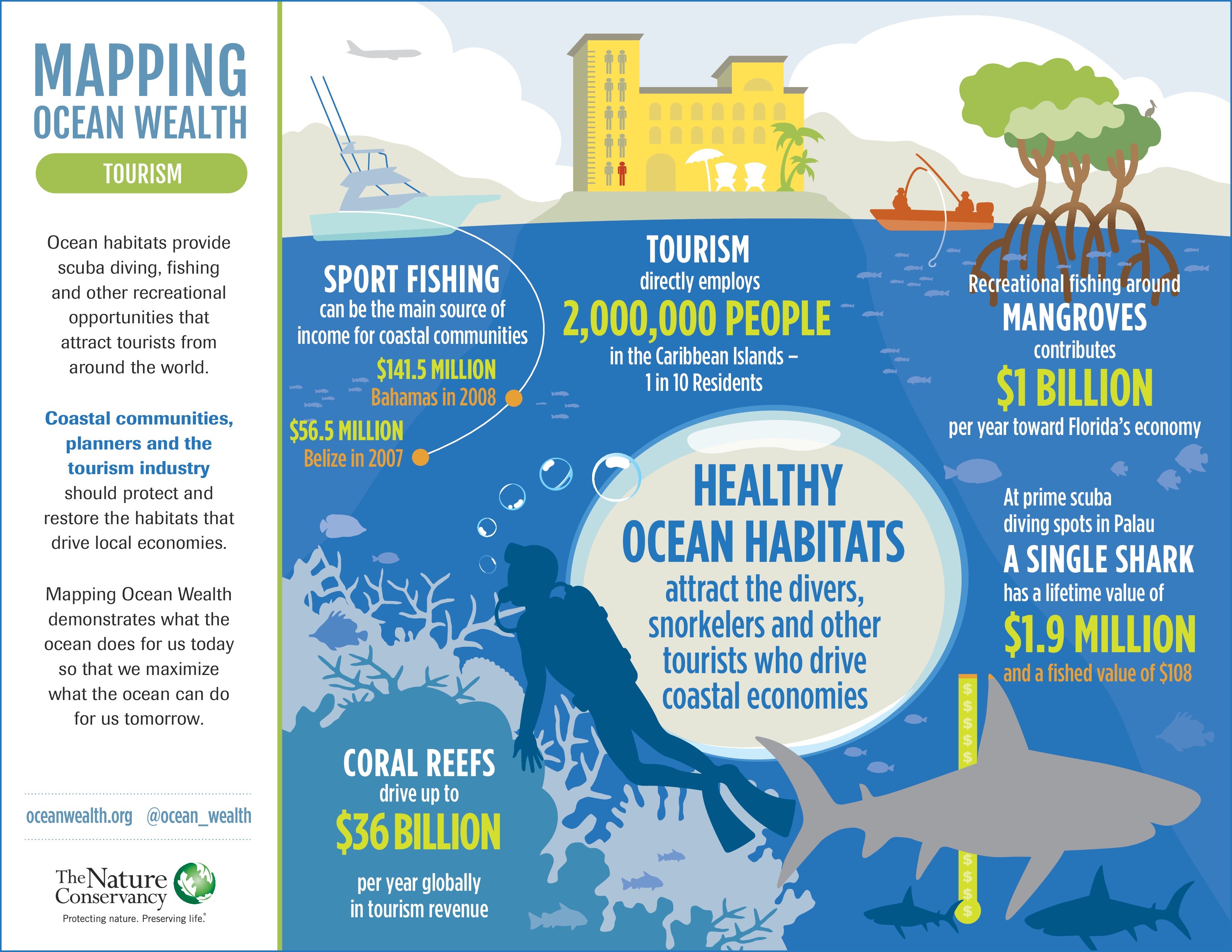 Infographic showing statistics about coral reef tourism
Infographic showing statistics about coral reef tourism
Mapping the Depths of Tourism Value
Understanding and mapping nature-dependent tourism presents unique challenges. The value isn’t just ecological; it’s a complex interplay of historical, cultural, infrastructural, political, and economic factors. Predictive models are difficult to develop due to these complexities, yet vast datasets, ranging from government statistics to hotel and airline booking data, are available to map usage and economic impact. Initiatives like Mapping Ocean Wealth are pioneering innovative approaches, leveraging social media and crowdsourced databases to gauge tourist activities and create detailed maps of nature-dependent tourism on a global scale.
Fine-Tuning the Focus: Tourism and Recreation Mapping
In coastal regions, tourism and recreation are intrinsically linked to the natural environment. This encompasses direct nature-based activities like coral reef diving, hiking coastal trails, or birdwatching, but also includes aspects of travel where nature’s role might be less obvious. The appeal of fresh, locally sourced seafood, for example, is profoundly valuable. Similarly, destination choices are often influenced by captivating imagery—think of travel posters showcasing pristine beaches or vibrant marine life—and even hotel selections are frequently driven by scenic views. White sandy beaches, crystal-clear waters, lush coastal forests, and the promise of fresh seafood are critical elements influencing tourist decisions and spending. Protecting these natural assets is essential for the tourism industry’s sustainability, yet decision-makers often lack concrete data or visual maps to guide them.
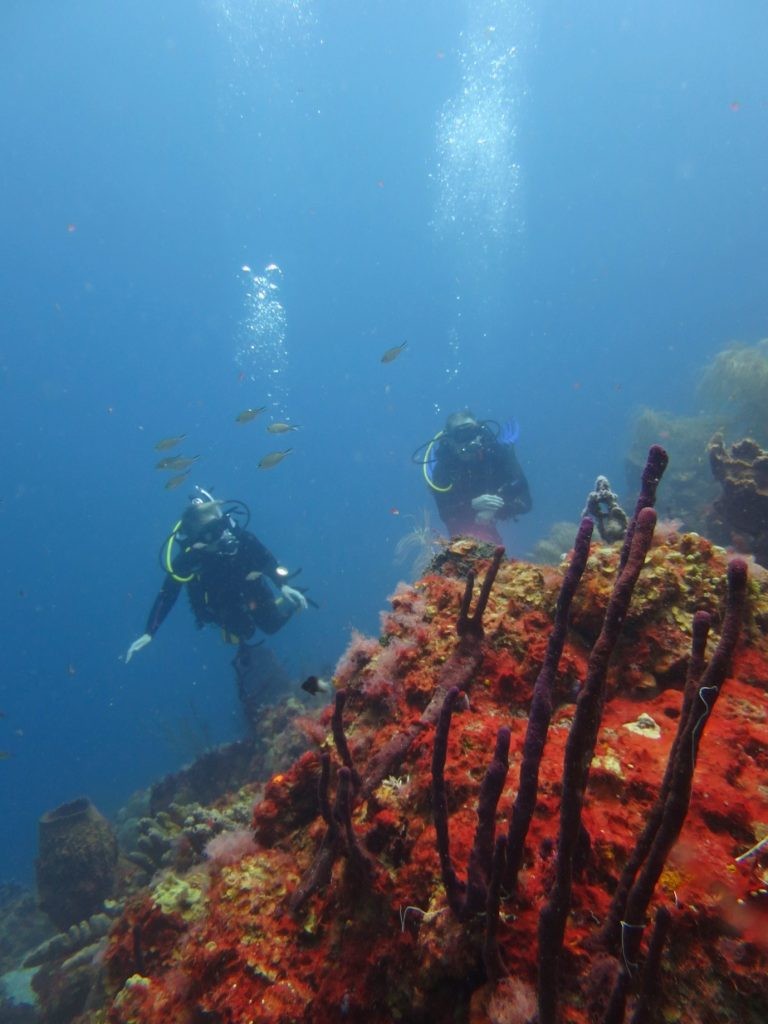 Divers exploring the underwater marine biome in St Lucia, highlighting the island's natural beauty and appeal for diving tourism.
Divers exploring the underwater marine biome in St Lucia, highlighting the island's natural beauty and appeal for diving tourism.
The Nature Conservancy is at the forefront of illustrating the deep connection between tourism and the natural world. In an innovative project spanning five Eastern Caribbean nations, they have mapped the economic value of nature across various tourism sectors:
- Reef-based activities like diving and snorkeling
- Beaches valued for their natural attributes
- Paddle sports in coastal waters
- Recreational and sports fishing
- Whale and dolphin watching tours
- Birdwatching excursions
- Seafood restaurants offering local catches
This comprehensive approach utilized publicly accessible data from extensive sources, including a significant collaboration with TripAdvisor, combined with local knowledge and outreach. Advanced image and text recognition technologies, with support from Microsoft’s AI for Earth team, facilitated the initial analysis of massive datasets. This process yielded approximately 90,000 independent data points, pinpointing locations where nature directly supports tourism and recreation.
Further details on these models are available at oceanwealth.org/project-areas/caribbean/crop/, and interactive maps can be explored at oceanwealth.org/oecs/. Reports and peer-reviewed publications are accessible via oceanwealth.org/resources/research-library/.
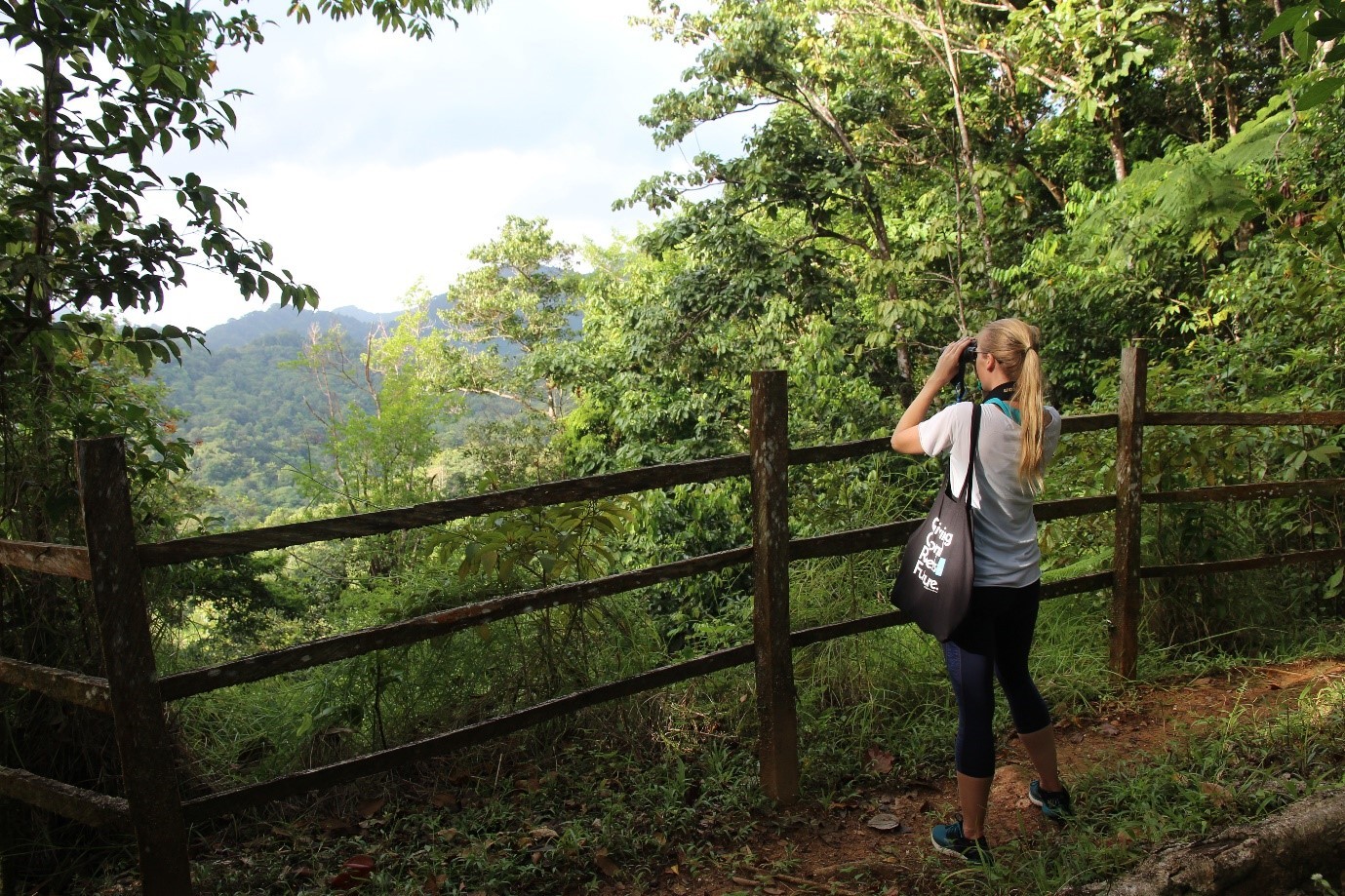 Birdwatchers in a coastal habitat, illustrating the appeal of marine biomes for specialized tourism like birdwatching.
Birdwatchers in a coastal habitat, illustrating the appeal of marine biomes for specialized tourism like birdwatching.
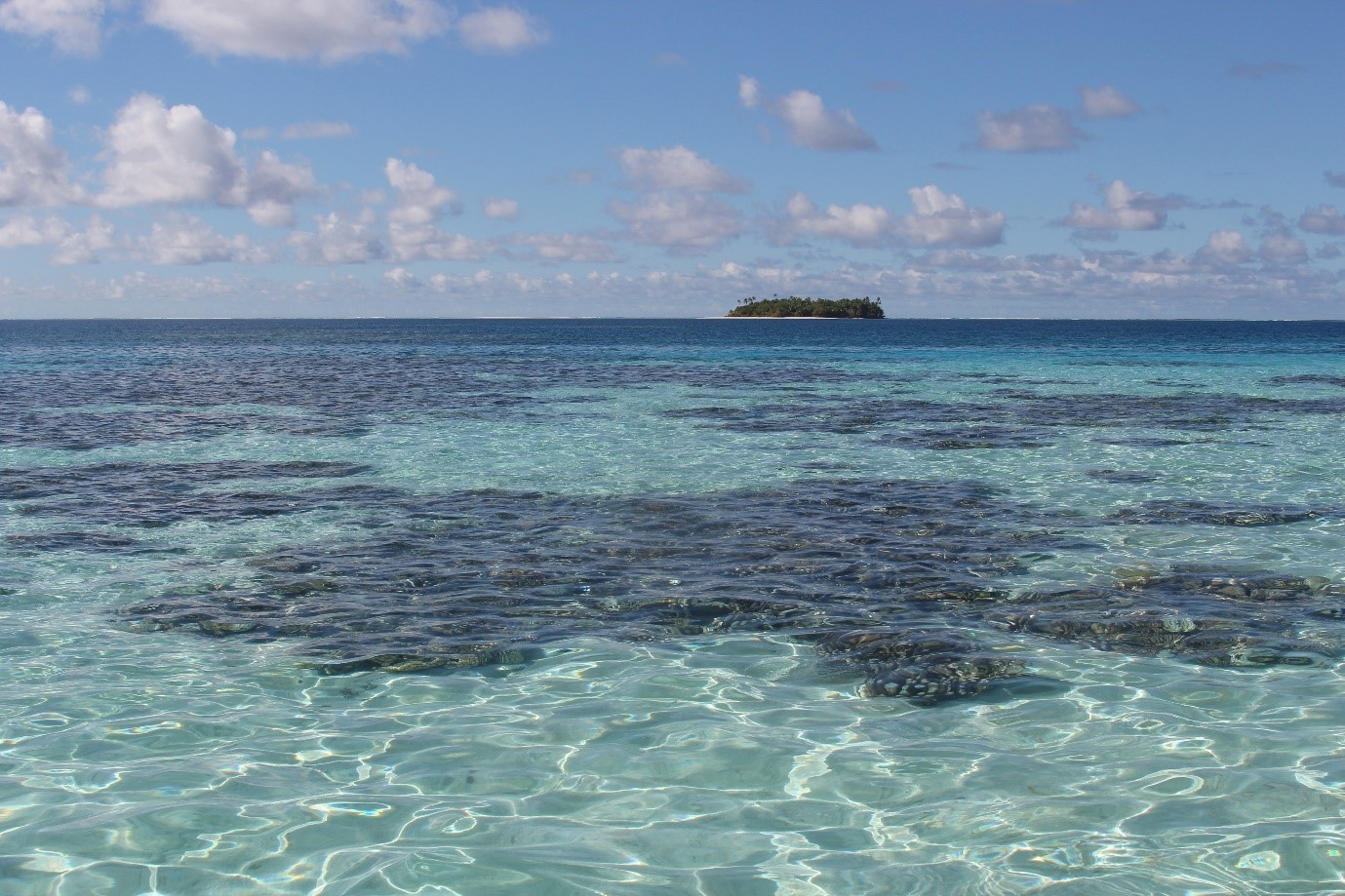 Vibrant coral reefs and clear turquoise waters of the Indian Ocean, showcasing the iconic marine biome often featured in travel posters.
Vibrant coral reefs and clear turquoise waters of the Indian Ocean, showcasing the iconic marine biome often featured in travel posters.
Similar methodologies have been applied to assess nature’s role in Seychelles tourism (https://oceanwealth.org/project-areas/seychelles/), where the findings are informing Marine Spatial Planning initiatives. New projects employing these techniques are also currently underway in other regions.
Global Coral Reef Tourism: A Visual Economy
Our global map of tropical coastal tourism is a product of a groundbreaking approach that integrates multiple large datasets, using them to validate and refine each other. The foundation was national tourism statistics, encompassing both domestic and international tourist arrivals and expenditures. The initial step was to isolate the coastal component of these figures. Two extensive datasets helped determine visitor distribution: data from over 125,000 hotels, including location and size, and geotagged photographs from Flickr. These independent sources provided visitation estimates, which were combined with coral reef maps to refine national tourism statistics, focusing on areas within two kilometers of the coast and 30 kilometers of coral reefs, excluding major urban centers. Explore the interactive map.
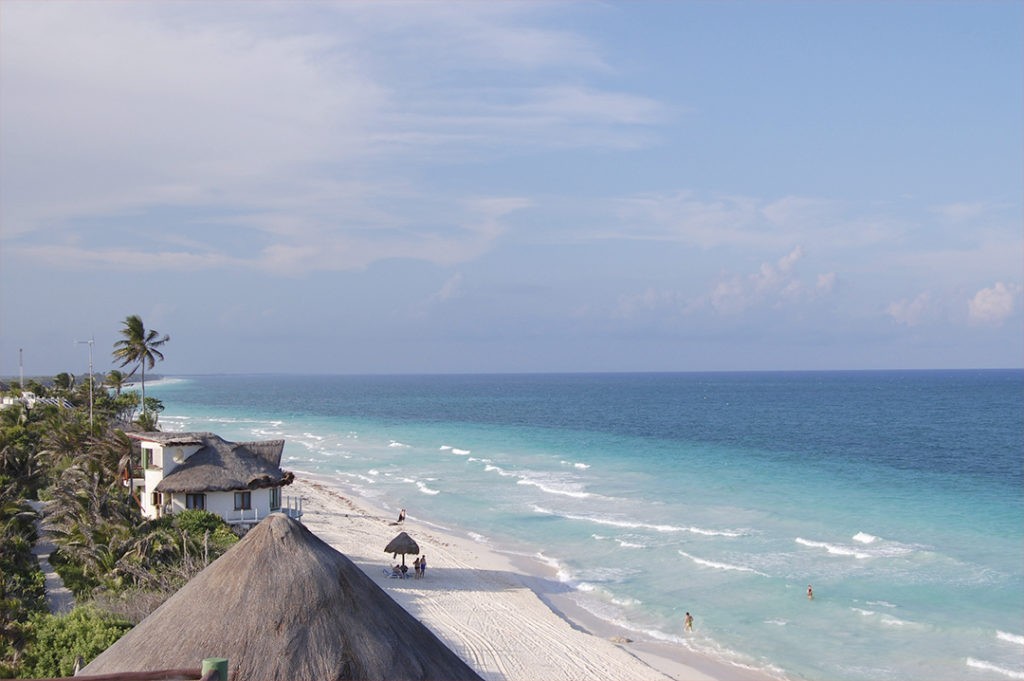 Global map visualization likely depicting coastal tourism hotspots, potentially used in a travel poster format to highlight key destinations.
Global map visualization likely depicting coastal tourism hotspots, potentially used in a travel poster format to highlight key destinations.
It’s crucial to acknowledge that not all tourism near coral reefs is directly reef-related. Conservatively, we attributed 10 percent of this coastal tourism expenditure to “reef-adjacent” tourism. This represents the added value that reefs contribute through calm waters, white beaches, superior seafood, and scenic views. We further developed an estimate specifically for “on-reef” tourism—the direct use of reefs for activities like diving and snorkeling. This was estimated using the locations of dive shops and centers and underwater photographs from Flickr. Areas with a higher concentration of dive centers per hotel or a greater proportion of underwater photos suggest a stronger emphasis on diving and snorkeling within the tourism sector.
The final stage involved linking the economic values of these tourism components back to the coral reefs providing the benefits. Proximity measures were used for reef-adjacent values, while direct-use locations from underwater photos and crowdsourced dive site databases informed on-reef value assignments.
The findings (https://www.sciencedirect.com/science/article/pii/S0308597X17300635) indicate that approximately 70 percent of the world’s reefs may not be significant for coral reef tourism. However, in other locations, the economic values are highly variable and substantial. Many leading coral reef tourism destinations are developing economies, such as the Solomon Islands, Fiji, Belize, and Honduras, often small island nations with limited economic alternatives. For these regions, reef tourism is a vital economic lifeline.
The Mapping Ocean Wealth team is currently refining these results using machine learning, artificial intelligence, and advanced social media data extraction techniques in partnership with Microsoft and Esri. Image recognition is being used to identify underwater photographs on Flickr, improving upon the original model that relied on user-added tags. This enhancement is expected to yield a more robust dataset and more accurate model outcomes.
In a related project supported by JetBlue and the World Travel and Tourism Council, efforts focused on refining reef-adjacent tourism estimates in the Caribbean. By combining literature reviews and social media analysis, national-level estimates on the importance of coral reefs to reef-adjacent activities were developed. This project moved beyond the original model’s uniform 10% valuation for reef-adjacent tourism, incorporating country-specific variations based on social media content and traditional data sources from government and tourism sectors. Detailed information is available in the report and project summary.
Mangrove Tourism: Hidden Gems in Travel Posters
For mangrove tourism, TripAdvisor was used to identify mangrove-related “attractions.” The aim was not just to locate visitation sites but also to understand tourist activities within these ecosystems. Analysis of attraction reviews identified keywords like “boardwalk,” “visitor center,” and “kayaking,” providing insights into popular mangrove tourism activities.
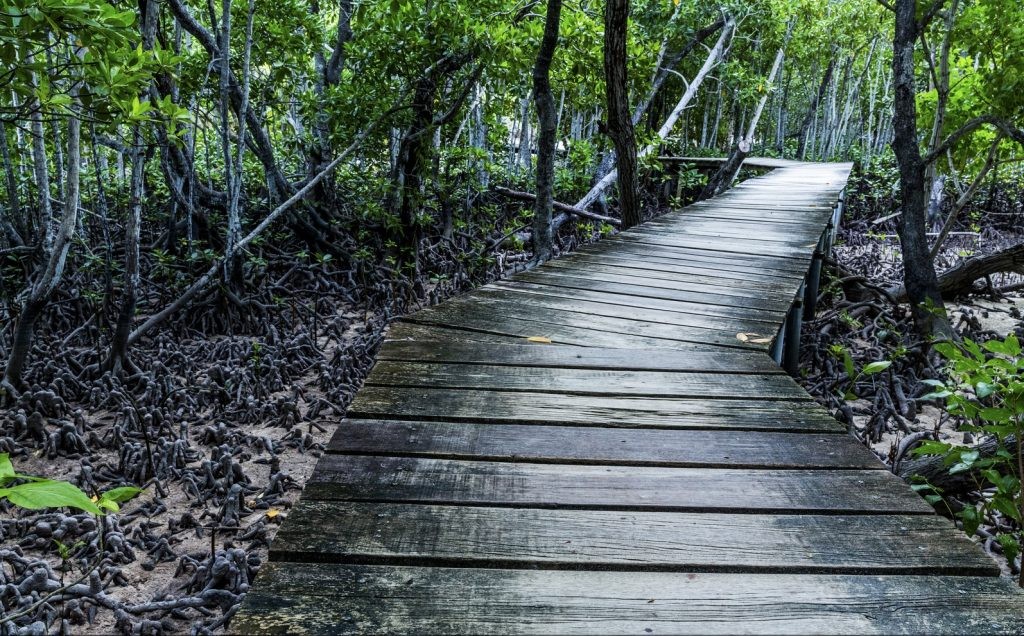 Mangrove forests depicted in a travel poster style, showcasing the unique appeal of these coastal ecosystems for tourism.
Mangrove forests depicted in a travel poster style, showcasing the unique appeal of these coastal ecosystems for tourism.
Globally, mangrove tourism is extensive, with nearly 4,000 attractions in 93 countries featuring mangroves. Many sites have hundreds of reviews, indicating visitation levels and revealing activities such as kayaking, wildlife tours, boardwalk explorations, and fishing. The inset in the original article highlights the distribution of mangrove tourism in the eastern Caribbean Sea.
While mangrove tourism might not rival mass-tourism attractions in scale, this research serves as a crucial reminder for coastal developers and highlights potential opportunities. Mangroves offer numerous ecological and economic values, and incorporating tourism can further incentivize the conservation of this vital habitat that provides food sources, coastal protection, and carbon storage. The full study can be found here, and maps are available here.
Wildlife Watching: Marine Megafauna in Tourism Campaigns
Oceans harbor the largest organisms on Earth and host spectacular wildlife gatherings. Since the 1990s, public attitudes towards marine life have transformed significantly. Access to destinations, from coral reefs to polar regions, offering close encounters with nature’s abundance has increased dramatically, outpacing general tourism growth.
Interest in marine megafauna, including sharks, whales, dolphins, and turtles, has surged. While some of these animals are still hunted, their tourism value often surpasses their value in fisheries. For instance, shark watching alone generates an estimated US$300 million annually, supporting 10,000 jobs worldwide. At specific locations, the economic impact can be remarkable. In Palau, a shark population of approximately 100 is estimated to support $18 million in annual shark diving revenue.
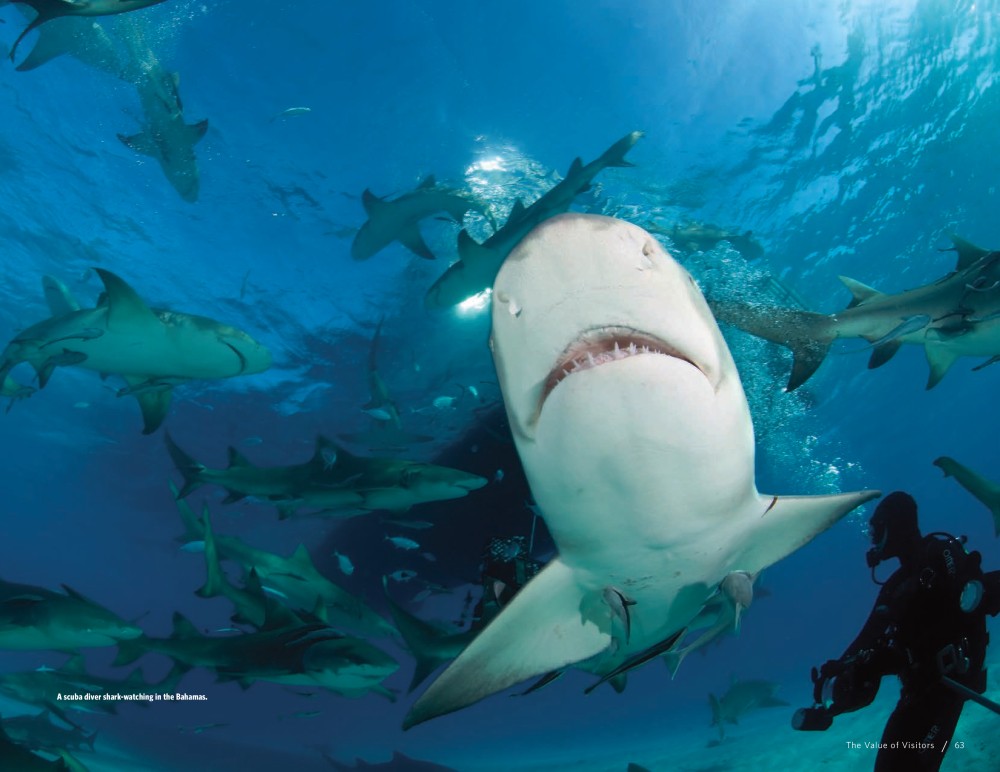 A world map highlighting ocean wealth and biodiversity, potentially used as a background image in a travel poster promoting marine wildlife tourism.
A world map highlighting ocean wealth and biodiversity, potentially used as a background image in a travel poster promoting marine wildlife tourism.
The Mapping Ocean Wealth team is exploring the economic value of wildlife viewing tourism regionally, with ongoing projects like the one in the Gulf of California, detailed here.
The Broader Picture: Nature’s Role in Travel and Tourism
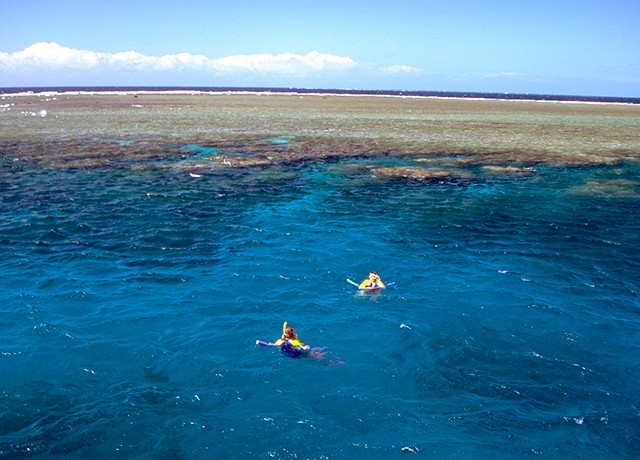 A coastal scene in Australia, typical of imagery used in travel posters to attract tourists to marine biome destinations.
A coastal scene in Australia, typical of imagery used in travel posters to attract tourists to marine biome destinations.
Travel and tourism contribute over nine percent of global GDP and support over 100 million jobs, making it a leading global industry. Coastal tourism is a major segment within this sector. Many tourists are drawn to nature-based activities like fishing, snorkeling on reefs, or whale watching. Others appreciate the indirect benefits of calm waters for swimming or relaxing on white sandy beaches. Accurately quantifying and valuing these diverse benefits is crucial for encouraging the tourism industry to protect its own future and enhance nature conservation efforts.
Coral reefs are quintessential examples of nature-based tourism’s appeal. Over 350 million people annually visit coral reef coastlines, many specifically to experience the reefs’ vibrant underwater ecosystems. However, countless more unknowingly benefit from reefs as natural providers of sand, coastal protection, food, and stunning vistas. These travelers support extensive industries—hotels, shops, tour operators, airlines, and supply chains—that cater to their diverse needs.
While mangrove forests may not be as prominently featured in travel posters as coral reefs, they offer a unique tourism appeal. Daily, thousands of visitors explore mangroves worldwide via boardwalks, guided boat tours, and kayaks, observing wildlife like manatees, alligators, proboscis monkeys, crocodiles, and even tigers.
Recreational fishers are also strongly attracted to mangrove ecosystems. In Australia, species like barramundi and mangrove jack are highly sought after. In the Caribbean, skilled fishing guides command high daily rates to lead fly fishers into mangrove and seagrass flats in pursuit of bonefish, permit, and tarpon. These recreational fisheries rely on pristine environments and healthy mangroves, creating significant economic incentives for conservation.
Tourists select destinations for varied reasons, from climate and coastal serenity to culinary experiences, culture, history, and nature-based activities. The degree of “nature-dependency” varies among tourists. However, ecosystems form the fundamental landscapes that many consciously or unconsciously seek and enjoy.
Nature-dependent tourism encompasses all tourism that relies on natural ecosystems for essential benefits. This dependency is often overlooked or taken for granted. Countless tropical beaches owe their existence to nearby coral reefs, which provide sand, turquoise waters, and wave protection, creating calm, clear swimming conditions. Elsewhere, water quality is significantly improved by the filtration and purification processes of saltmarshes, mangroves, and oyster reefs. Even the seafood enjoyed by millions of travelers depends on healthy marine ecosystems.
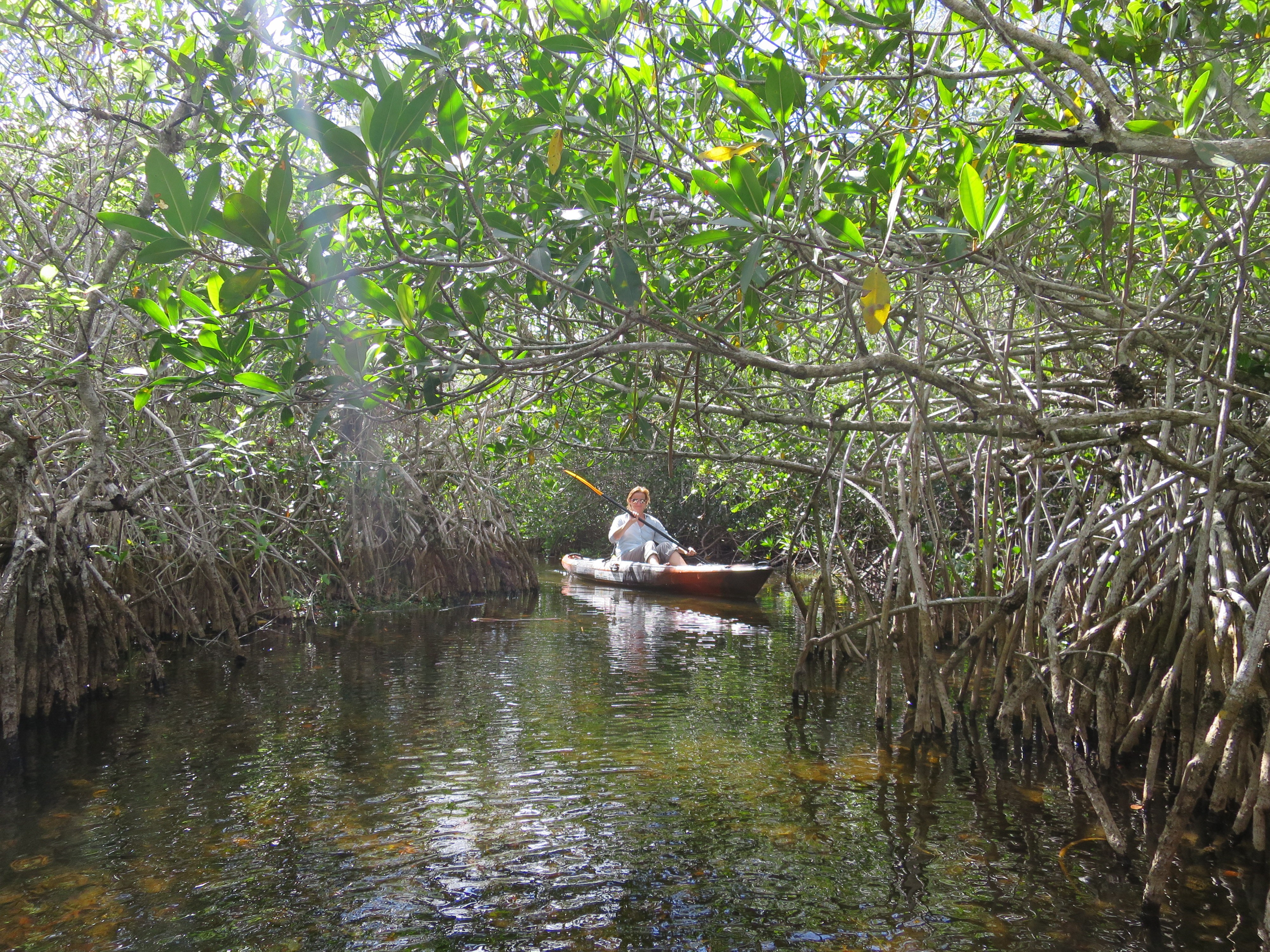 A close-up of clear, shallow coastal waters and white sand, representing the idyllic beach scene often depicted in travel posters promoting marine biome destinations.
A close-up of clear, shallow coastal waters and white sand, representing the idyllic beach scene often depicted in travel posters promoting marine biome destinations.
The benefits of nature-based tourism, more directly linked to healthy ecosystems, are better recognized. Activities include wildlife viewing, boating in natural habitats, fishing, and scuba diving. A study from 2003 estimated that approximately 121 million people globally participated in at least some of these activities (excluding boating), and this number has undoubtedly grown substantially. Recreational fishing is a prime example of nature-based tourism, heavily reliant on healthy ecosystems. When managed sustainably, it can offer greater benefits to local communities than commercial fishing.
Tourism, however, is not without its impacts. Hotel developments, marinas, and cruise ports can destroy coastal habitats. Inadequate sewage treatment pollutes coastal waters. Travel itself is a major source of greenhouse gas emissions. Even nature-based tourism can be detrimental. Overfishing diminishes future fishing experiences for visitors. Disturbance of marine mammals and turtles can disrupt their behavior and reproductive success. Anchor damage can destroy corals and seagrass beds.
Sustainable tourism is crucial in mitigating these negative impacts. When tourism is sustainable, it can enhance visitor experiences and ensure long-term benefits for local communities. Tourists often willingly support conservation-linked fees, such as park entrance charges, when these funds are clearly directed towards environmental protection. In this way, tourism can become a part of the solution, rather than an additional threat to marine biomes.
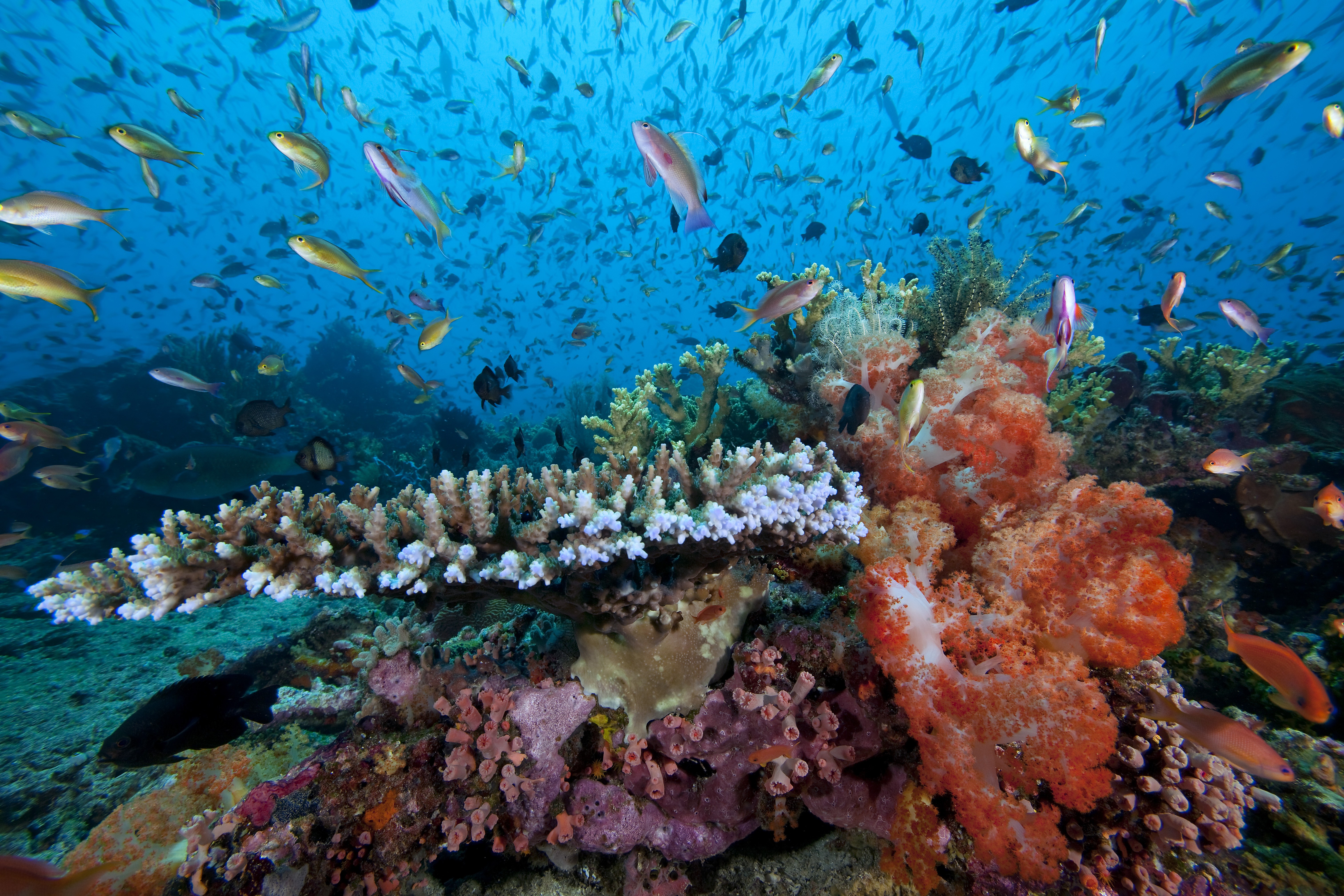 Collage of ecosystem tiles: Coral Reefs, Mangrove Forests, and Other Ecosystems, visually summarizing the diversity of marine biomes relevant to tourism.[
Collage of ecosystem tiles: Coral Reefs, Mangrove Forests, and Other Ecosystems, visually summarizing the diversity of marine biomes relevant to tourism.[
Coral Reefs](/ecosystems/coral-reefs/)
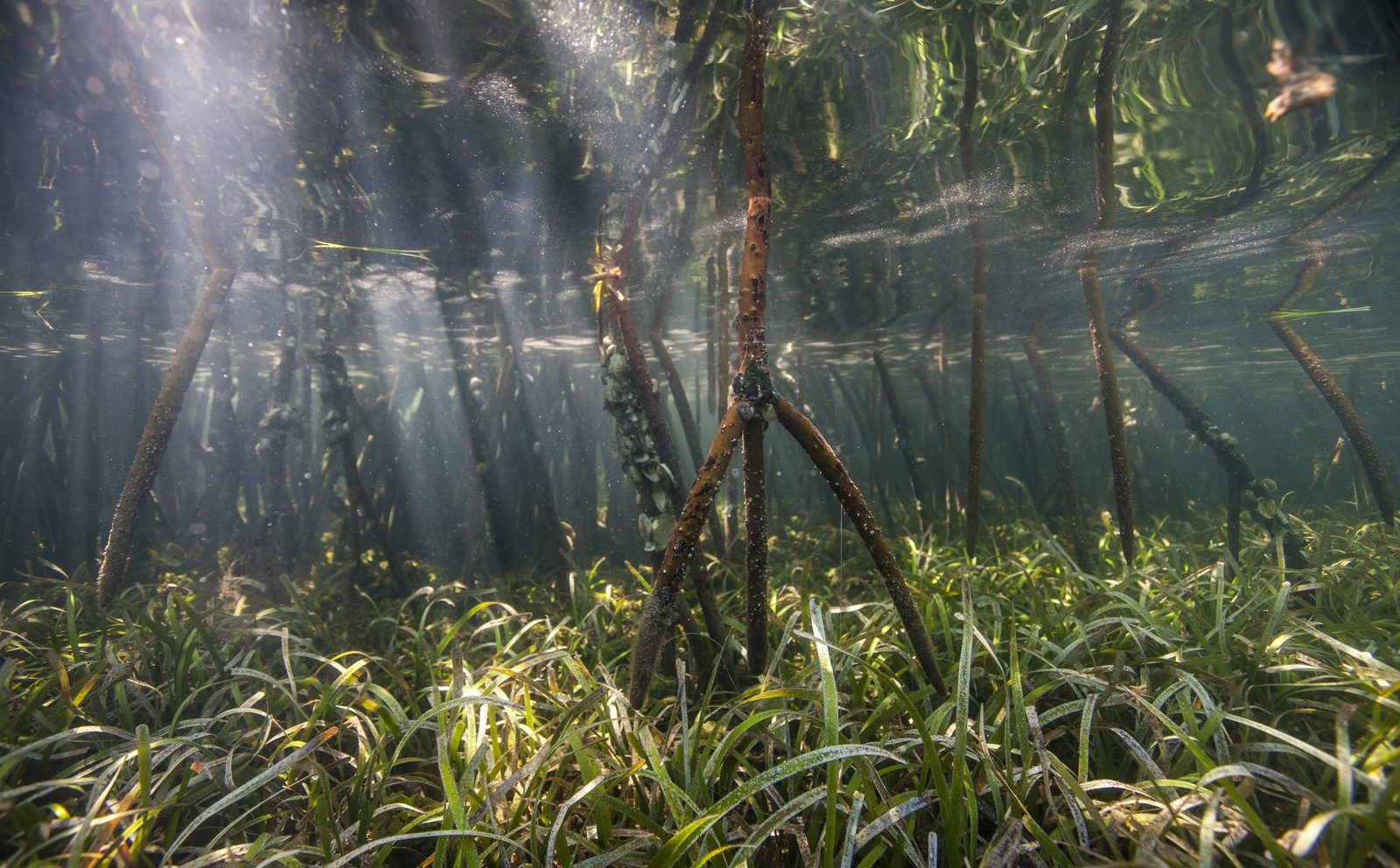 Tile image for Mangrove Forests ecosystem.[
Tile image for Mangrove Forests ecosystem.[
Mangrove Forests](/ecosystems/mangroves/)
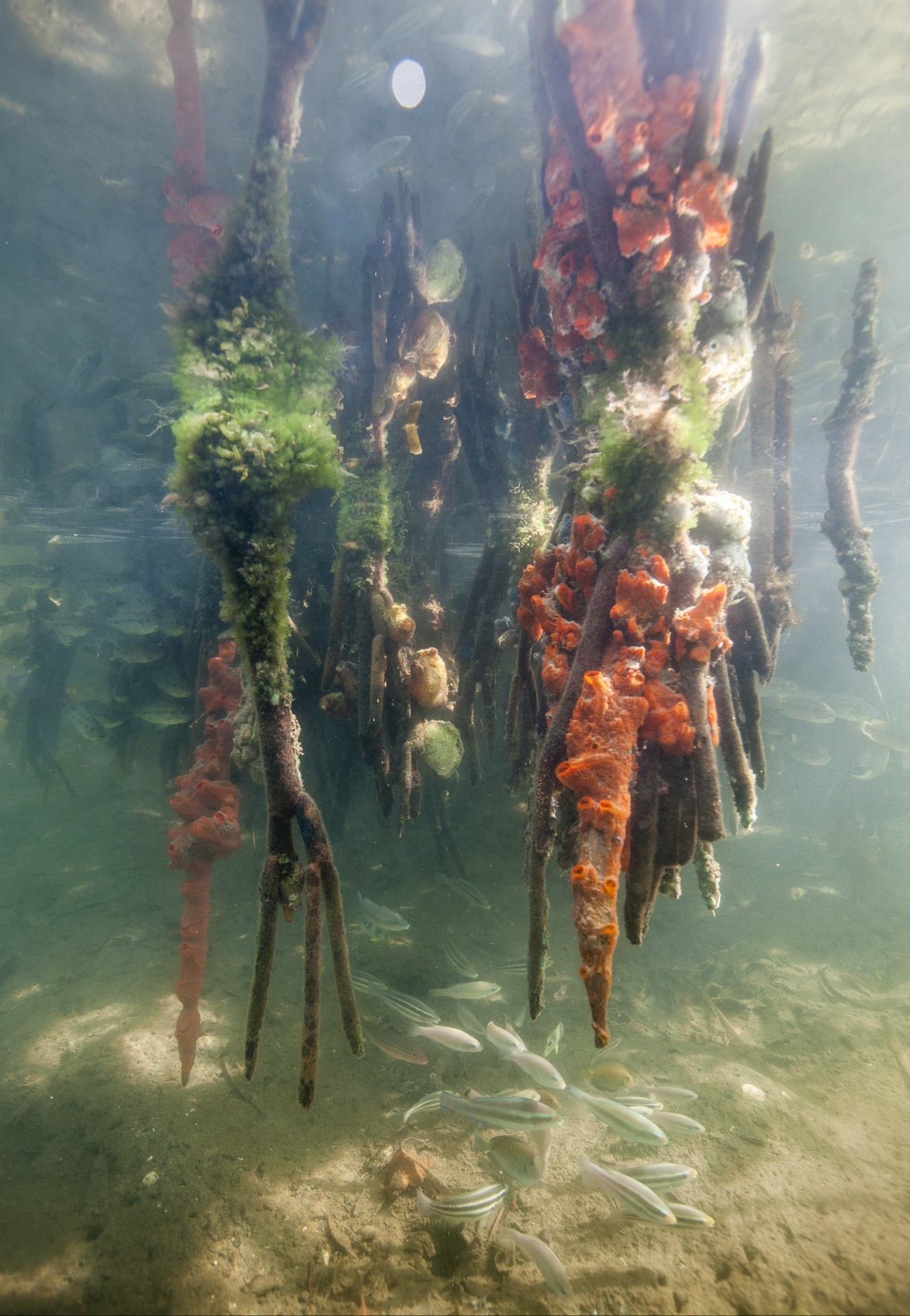 Tile image for Other Ecosystems, showing sponges.[
Tile image for Other Ecosystems, showing sponges.[
Other Ecosystems](/ecosystems/other-habitats/)
Top image: ©Ami Vitale. Photo Credits in Text: © Christiana Ferris, © Jason Houston, © Jeff Yonover. Tiles (left to right): © Jeff Yonover, © Tim Calver

